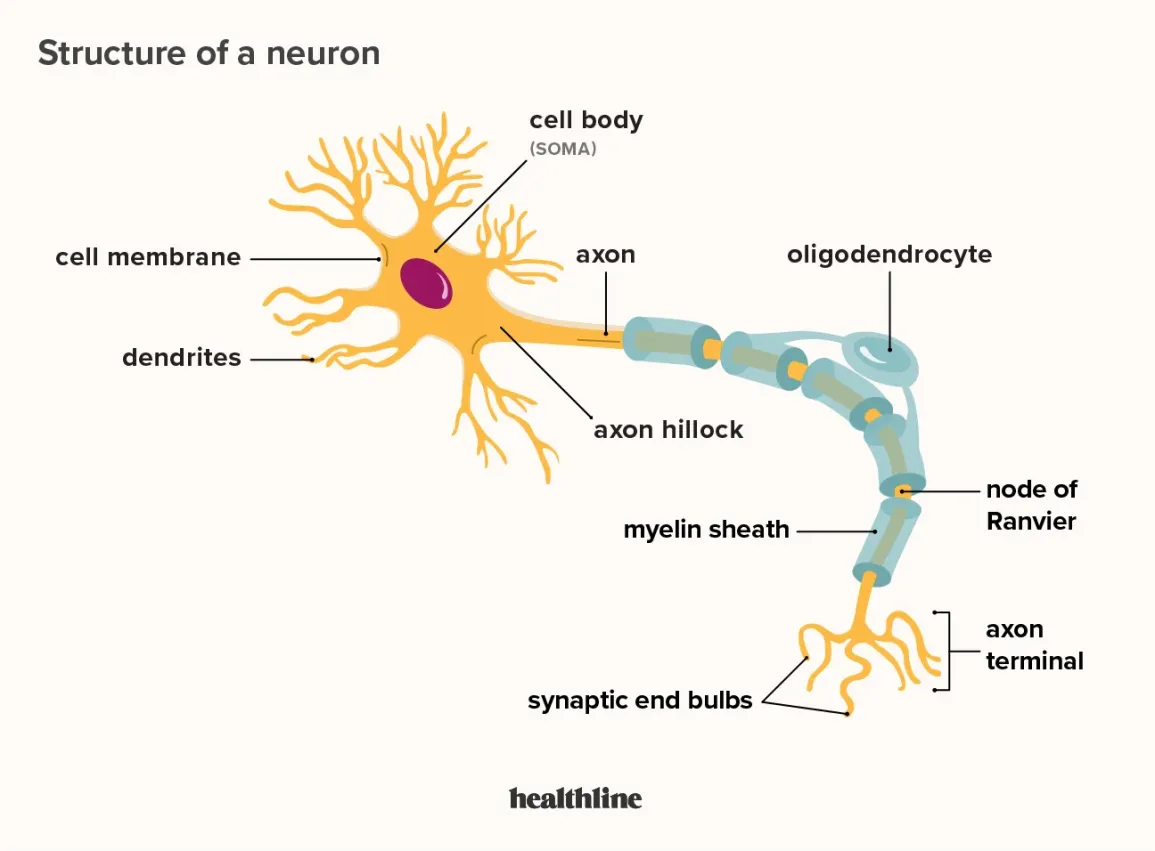Psych Unit 1- Biological Basis of Behavior & States of Consciousness
1/87
There's no tags or description
Looks like no tags are added yet.
Name | Mastery | Learn | Test | Matching | Spaced |
|---|
No study sessions yet.
88 Terms
Natural Selection
organisms with traits that better enable them to survive and reproduce in their environment are more likely to pass those traits on to future
Eugenics
controlled breeding to increase the occurrence of desirable heritable characteristics
Twin studies
compare identical twins to one another
Monozygotic (identical twins) vs dizygotic (fraternal twins)
Adoption Studies
compare twins who have been separated and adopted by different families
Family studies
researchers assess hereditary influence by examining blood relatives to see how much they resemble each other on a specific trait
epigenetics
study of heritable changed in gene expression that occur through alterations in the chromosome rather than in the DNA sequences
Neurons (know the parts)
Dendrite
Cell body/soma
Axon
Myelin Sheath
Axon terminals/terminal buttons
synapse/synaptic cleft

glia cells
non-neuronal cells in the nervous system that provide support and protection for neurons, maintain homeostasis, and produce myelin.
provide structural support and insulation; 1 to 5 million
reflex arc
neural pathway that controls a reflex
receptor activation, sensory neuron transmission, integration in the central nervous system, motor neuron transmission, and effector response.
sensory neurons
carry sensory information from external environment to CNS
motor neurons
transmits signals from CNS to muscles
interneurons
connect sensory neurons to motor neurons in CNS
mirror neurons
fire both when an individual perform and action or observes the same action being performed (when watching smth ur brain processes it as if you’ve done it too)
dopamine
serotonin
norepinephrine
GABA
glutamate
substance p
acetylcholine
endorphins
resting potential
stable, negative charge when the cell is inactive (polarized)
action potential
rapid, electrical impulse that travels down a neuron's axon to transmit signals
all the same size
absolute refractory period
minimum time which another impulse can not occur (1-2 milliseconds)
all-or-nothing principle
a neuron either fires or it doesn’t
inhibitory neurotransmitters
excitatory neurotransmitters
reuptake
synaptic pruning
agonist
antagonist
central nervous system
peripheral nervous system
autonomic nervous system
somatic nervous system
sympathetic v. parasympathetic division
fight-flight response
lesioning
Brain scans: EEG & fMRI
brainstem
hindbrain: medulla, cerebellum
midbrain: reticular activating system
forebrain: cerebrum, cerebral cortex
limbic system- thalamus, hypothalamus, hippocampus, amygdala
occipital lobe- visual cortex
parietal lobe- somatosensory cortex
temporal lobe- auditory cortex
frontal lobe- prefrontal & motor cortex
brain plasticity
neurogenesis
broca’s area
wernicke’s area
aphasia
left hemisphere
right hemisphere
corpus callosum
Roger Sperry & Michael Gazzaniga’s split brain research- Contralateral hemispheric organization
hormones: adrenaline, leptin, melatonin, oxytocin, ghrelin
pituitary gland
multiple sclerosis
myasthenia gravis
evolutionary psychology
critical period
Consciousness
Sleep stages with EEG patterns
Brain waves: beta, alpha, theta, delta
Circadian rhythms
Pineal gland- melatonin
Jet lag
NREM stages 1-3 (your textbook also has a stage 4)
hypnagogic sensations (occur in stage1)
REM sleep (paradoxical sleep)
REM rebound
Sleep deprivation/disruption effects
Insomnia
Narcolepsy
Sleep apnea
Somnambulism
REM sleep behavior disorder
Hobson & McCarley’s Activation-Synthesis theory of dreams
Consolidation dream theory (memory consolidation)
Drugs to know: stimulants, caffeine, cocaine, depressants, alcohol, hallucinogens, marijuana, opioids, heroin
Addiction
Tolerance
Physical dependence
Psychological dependence
Withdrawal
brain’s reward center- Mesolimbic dopamine pathway- Nucleus accumbens